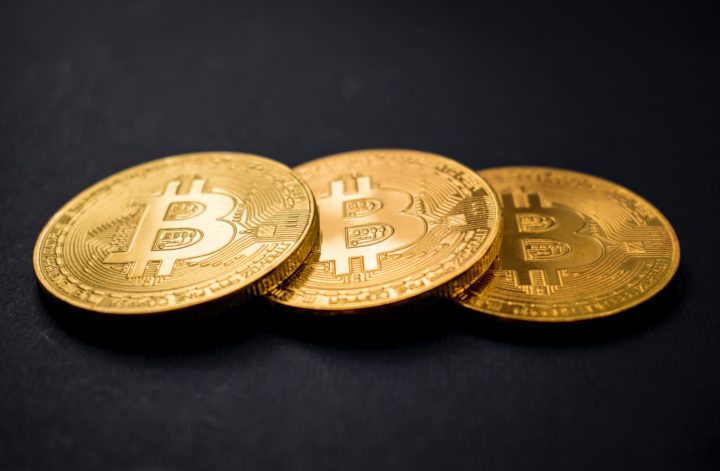vc.DAO
Venture investing as we know it has a rather high barrier of entry especially for those who do not already have existing networks in the ecosystem or are located in geographical areas that do not have a vibrant venture community.
While crypto has certainly democratized venture investing to a certain extent, due to various factors(e.g. regulatory requirements, uncoordinated community, etc) and rightly so, that we’re witnessing venture investing in the crypto space reverting from its ICO days to more institutional-based. Only when a project matures and progresses to its “decentralizing phase” that public sales are conducted and access is opened up to the broader community. This seems like the best solution thus far, given the lack of clear regulations governing the space to prevent bad actors from exploiting participants.
The following is an idea that I’ve been tinkering with for some time and thought could be an attempt in democratizing venture investing for the community using blockchain technology and Decentralized Autonomous Organization(DAO) structure.
The Problem:
Aspiring investors currently face a high barrier of entry into the industry due to 1) lack of access 2) lack of capital, 3) lack of knowledge/operational experience. The leverage an individual private investor has in negotiating for an allocation in a private fundraising round is minimal, relative to institutions and professional fund managers. The value that an individual private investor can provide to prospective investees is limited as compared to institutions given the limited resources and capacity an individual can afford to commit to an investment. Therefore, in order to bridge this disparity between private investors and institutions is where a DAO-powered investment fund could potentially find value in.
The Solution:
A DAO-powered venture fund aligns the incentives of like-minded individuals, provides a clear structure in decision making and enabling every aspiring, talented and hardworking investor to come together to form a community, pooling resources and making a greater impact in every initiative.
The Objective:
To lower the barrier of entry into venture investing, democratizing the entry process while providing a platform for aspiring talented investors to excel.
To leverage on the collective knowledge of the crypto-community to make investments in Web 3 applications, protocols and the wider blockchain industry.
Super-charged the impact that an investor can provide to the investee, through a well-coordinated and aligned community ecosystem.
How it works:
To gain entry into vc.DAO, prospective members would need to contribute to the ecosystem first (“Proof-of-Work”). This can be in the form of 1) writing up high-quality investment memos, 2) help out in vc.DAO’s portfolio company, 3) amplify the work of vc.DAO or 4) any other value-enhancing work.
Based on their contributions, newcomers can then put forward their interest (along with a proposal on what they will bring to the DAO upon admittance, e.g. quality deal flow, operational contributions, etc) for consideration to be admitted to the DAO. With >50% vote by vc.DAO existing members, the newcomer will be admitted to the DAO via issuing 1 pDAO token to the user.
pDAO (placeholder name) token indicates that the holder is under probation but are allowed to participate in voting on the proposal, and other vc.DAO activities(such as providing feedback on proposed investment memos, investment idea generation, etc) but not the share of investment returns.
vc.DAO (placeholder name) token indicates that the holder has a share in investment returns(pro-rated based on the number of tokens each user holds) and also the right to vote on the proposal and participates in other DAO activities.
Probation of newcomer ends when the DAO voted for and executes on the proposed investment memo by the newcomer, or the newcomer made significant contributions to one of vc.DAO’s portfolio company(e.g. wrote a significant portion of code for the protocol, etc). They will then be eligible to purchase vc.DAO tokens and formally inducted into vc.DAO.
Tokenomics
pDAO token: 1 token 1 vote on proposals, no share of investment returns
vc.DAO token: 1 token 1 vote on proposals, share of investment returns, a representation of the involvement and capital committed by the user to vc.DAO. vc.DAO token will only be issued through 1) capital buy into the DAO, 2) significant contribution made to vc.DAO ecosystem.
The flywheel works when every new member brings value to the vc.DAO ecosystem either through quality deal flow, operational/technical experience or other value-enhancing actions, which will translate to increased investment returns over time.
Each existing member is incentivized to be highly engaged in the community and actively participate in providing feedback and voting on proposals within the vc.DAO ecosystem as 1) it dilutes voting power through the inclusion of new members, 2) reduced investment returns if new members aren’t bringing value to the ecosystem.
The minting of new vc.DAO token will dilute existing holders share of profit and voting weightage, however with constant value-enhancing activities going on, the pie will be growing larger thus it’s a net positive sum event. In addition, this setup encourages members within the DAO to actively contribute to the objective to 1) increase their stake in the ecosystem, 2) rewarding high performers as they receive a larger share of returns and have more voting weightage in proposals due to them holding a larger amount of vc.DAO tokens.
Freerider problem
Addressing a potential free-rider problem with the above setup, once a member gets inducted into the DAO and are entitled to a share of investment returns they may stop contributing and just collect the distributed returns.
To address this issue, vc.DAO will start flagging inactive members whenever their share of vc.DAO token / total vc.DAO token drops below a certain threshold. This will then trigger the need to vote if the DAO should retain this particular inactive member.
Strengths
The importance of having a vibrant community is increasing as we speak, with vc.DAO, every member’s interest is aligned and actively contributing to the ecosystem, thereby providing a huge amount of value/traction to prospective projects as they plug into vc.DAO’s ecosystem.
The blockchain industry is innovating at lightning speed, it’ll be a stretch for any individual to fully grasp what’s going on in the space in a consistent manner, thus there’s synergistic value for individuals to operate as a group/community to gain a competitive edge in investing in the industry.
1 line on the cap table, an entire community gets behind their back with wide-ranging experiences and skillsets working actively to value add to the project.
Greater transparency in all decision-making processes, from putting up a proposal to join vc.DAO to making investment decisions, you get immediate feedback from the community. Discussions on proposals are documented on forums which serve as timeless educational material for folks who are keen to learn to review them.
Pooling resources, networks, skill sets to grow a larger pie that’s a net positive-sum for all participants involved.
Concerns
Would the incentive mechanism work?
Any legal ramifications? Regulatory concerns?
Fund returns supercharged by base layer staking. (ETH 2.0 staking / STX PoX stacking)
As members commit capital to vc.DAO’s treasury for deployment via ETH/STX token, these ETH/STX tokens will be staked/stacked to generate a yield via PoS/PoX, and in turn a synthetic ETH/STX (sETH/sSTX) will be issued to represent the amount locked in the protocol. sETH/sSTX can then be converted to stablecoins (USDC) and be deployed into investments.
This allows the base layer asset to be constantly generating a yield to vc.DAO while capital is deployed into venture investments with exposure to venture-like returns over the long term, thereby supercharging overall net returns.
Future Opportunities
Expand the DAO to other asset classes, 1) traditional startups, 2) real estate, 3) art, 4) wine, etc.



